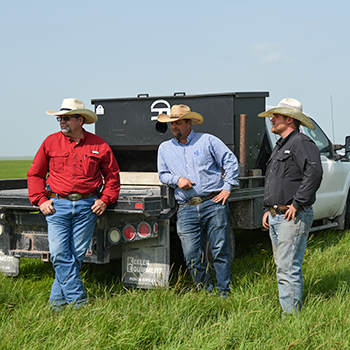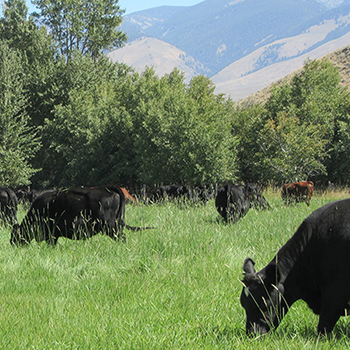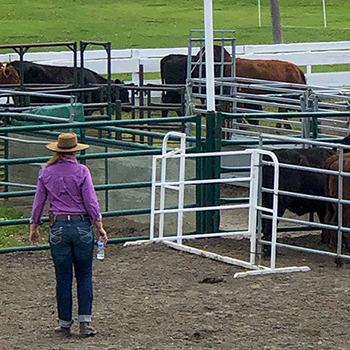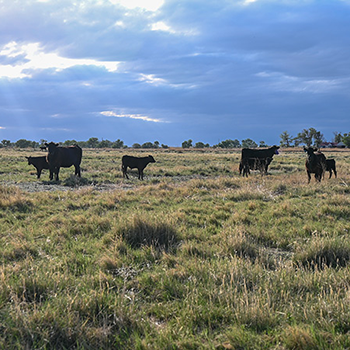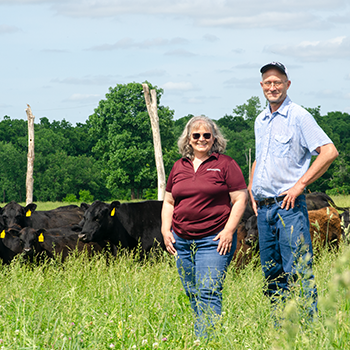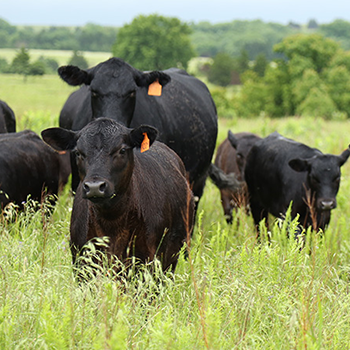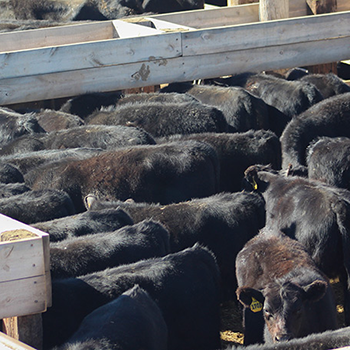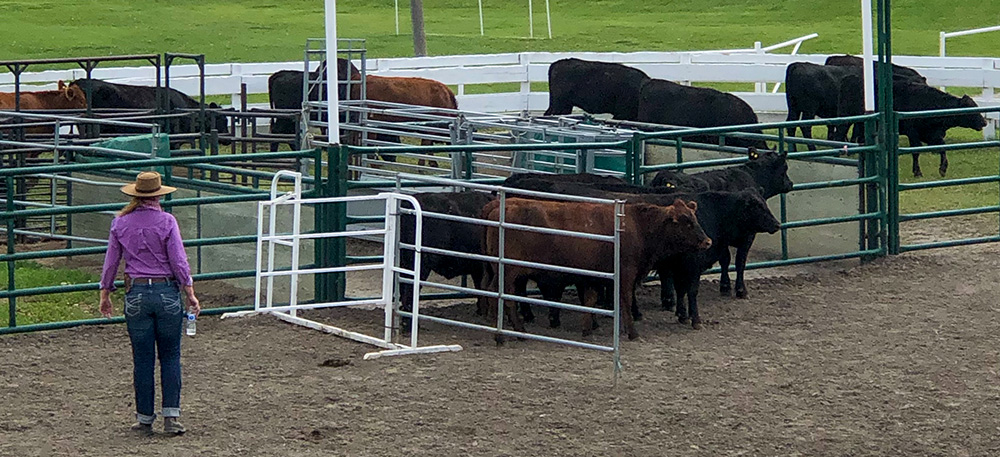
First-of-its-kind Stockmanship Challenge
A new way of thinking leads to a new type of competition.
Occasionally someone comes along with ideas or observations that change the way people do things. Sometimes they change the face of an industry. Bud Williams was one of those people. His unique cattle-handling methods are now being adopted by a growing number of folks in the cattle industry.
As a way to showcase these methods and to teach them, Malcolm and Jenny MacLean presented the first-ever Ultimate Stockmanship Challenge July 9-10 at the Pincher Creek Rodeo Grounds in Alta., Canada. The contest was hosted in conjunction with a low-stress stockmanship school taught by Dawn Hnatow and Whit Hibbard the day before. They, along with Paul Kernaleguen, were the judges for the Challenge.
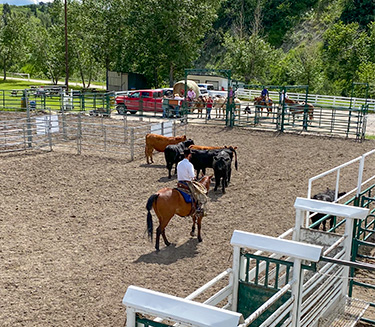
The goal of the clinic and the two-day competition afterward was to give participants enough understanding and experience to be able to go home and successfully apply the techniques on their own ranches or cattle-handling jobs. The contest included on-foot competition and horseback — taking the cattle through a specific course. |
The stockmanship school was an introduction to the livestock-handling methods developed by Bud Williams. Topics covered in the morning class included benefits of low-stress methods as compared with conventional cattle handling. Then they covered the basics of low-stress handling: the importance of mindset and attitude, how to read an animal, how to prepare and handle cattle, principles and techniques. The afternoon class focused on practical applications, which included driving cattle, corral work and facilities, crowd pens, chute work, scale loading, and loading cattle for transport.
The goal of the clinic and the two-day competition afterward was to give participants enough understanding and experience to be able to go home and successfully apply the techniques on their own ranches or cattle-handling jobs. The contest included on-foot competition and horseback — taking the cattle through a specific course.
Getting started
Kernaleguen recalls, “I am part of a small company (Kattle Squared Services) in Saskatchewan that before COVID hosted clinics for different things, and stockmanship was always one of the topics. We’d try to bring people in to do clinics, like the Williams family or one of their senior students, like Dawn Hnatow and Whit Hibbard.”
Malcolm had the original idea for the competition. He contacted Kernaleguen about it, and eventually Hnatow and Hibbard were brought in. The group wanted to include educational aspects. A second goal was to keep it pure — not letting it become a rodeo.
“We felt it would never be a spectator sport because it’s such a peaceful way to handle cattle; most people wouldn’t know what they are looking at or be very impressed,” says Kernaleguen.
After the first day, he says, many contestants were a little nervous and maybe too cautious; they had a tougher time completing the tasks. There was a review/debriefing with the contestants and judges, to let the contestants know that low-stress stockmanship doesn’t have to be slow.
“There’s a difference between unnecessary stress and proper pressure to have them move,” Kernaleguen notes.
On the second day, a lifeline option was added. If someone was stuck, they could ask for help from the judges and get opinions on how to get out of a situation.
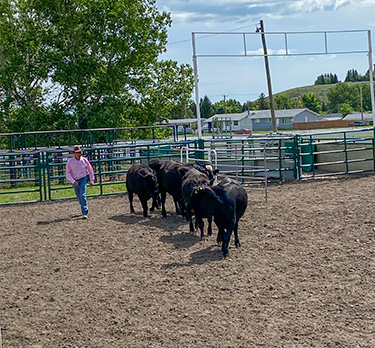
“There’s a difference between unnecessary stress and proper pressure to have them move,” Kernaleguen notes. |
Behind the scenes, the cattle owner was prepping the different pens. According to Kernaleguen, the owner noticed a complete change in the behavior of the cattle. It was a positive experience for the people and the cattle.
“If the cattle industry could just learn 10% of what Bud taught, it would totally change the industry,” he says.
Humans have a tendency to naturally do the wrong thing when handling cattle.
“We are still very much a predator and operate on predatory instincts,” says Kernaleguen. “People think they can hide their emotions from animals, but Eunice Williams once said, ‘The only reason these animals are still here today (surviving for hundreds of centuries) is because they are so good at reading predators. We can’t bluff them!’ ”
They had to survive in a world that was trying to eat them.
“Once you realize how sensitive they are to what we do, it changes the way you think about it. Bud’s ideas were so logical. Why couldn’t we have thought of these things on our own? He was one of those once-in-a-lifetime guys who saw things differently,” says Kernaleguen.
Cattle become easier to handle because they learn to respect and trust you. You have to be a little assertive, like a dominant herd member, but consistency is important. Cattle crave consistency (that’s what they trust) and once you figure out how to do that, it’s easier. If you are inconsistent, they keep wondering what you are going to do next and are wary, he concludes.
Editor’s note: Heather Smith Thomas is a freelance writer and a cattlewoman from Salmon, Idaho. Photos by Malcolm MacLean.
